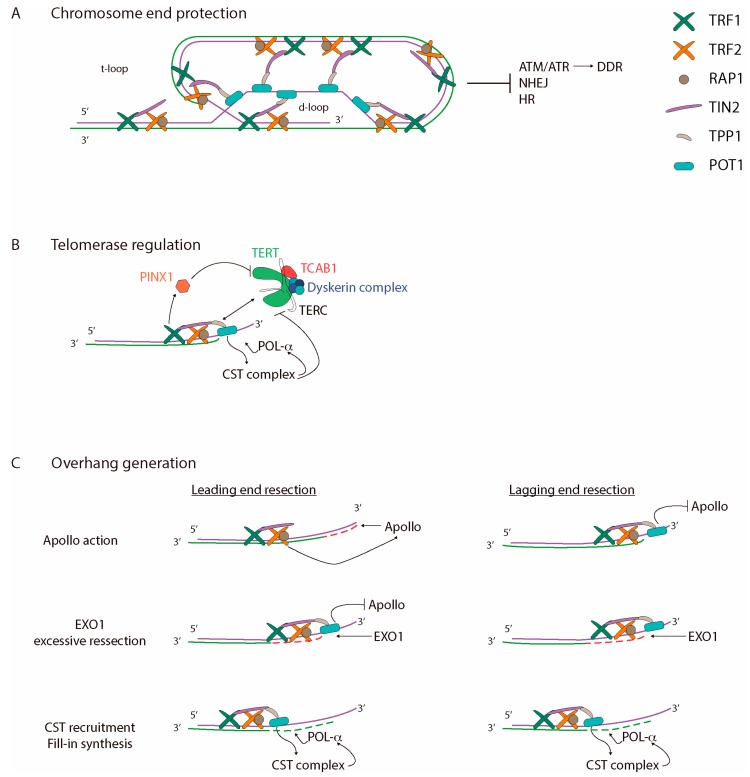Figure 1.
Telomere structure and maintenance. Human telomeres are specialised nucleoprotein structures that cap the end of chromosomes. Telomeric DNA is coated by shelterin proteins that regulate (A) chromosome end protection; (B) telomerase regulation; and (C) overhang generation. (A) Telomeres adopt a t-loop structure that prevents DNA damage response (DDR), by blocking ATM and ATR activation, and DNA repair activities via NHEJ and HR; (B) telomerase action is tightly regulated and only acts at telomeres during S-phase. Telomerase preferentially acts in short telomeres, maybe by indirect inhibition through TRF1 and PINX1 and/or other unknown mechanisms. TPP1 physically interacts with telomerase, and is essential for telomerase recruitment together with TIN2. It has been suggested that POT1-TPP1 is implicated in telomerase-telomere engagement. Besides that, POT1-TPP1 stimulates telomerase action until a certain threshold of telomeric repeats is reached. Once telomerase is blocked by CTC1-STN1-TEN1 (CST) and/or POT1, CST facilitates fill-in synthesis of the C-strand by polymerase-α (POL-α) recruitment; (C) Mammalian chromosomes terminate in a 3′ G-rich overhang that is essential for t-loop formation. DNA replication originates blunt ends in the leading strands, and non-blunt ends in the lagging strands. TRF2 recruits Apollo that resects 5′ strand from leading ends (dashed red line) to generate a 3′ overhang. Then, EXO1 excessively resects the leading and lagging strands (dashed red lines) to generate longer overhangs. In addition, finally, POT1 facilitates the 5′-strand fill-in (dashed green lines) by the recruitment of POL-α, through the CST complex.

